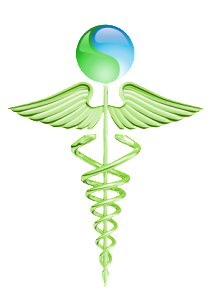
The very sophisticated treatment modalities of Traditional Chinese Medicine (TCM) that are used to achieve healing were developed over thousands of years by the Chinese. TCM served as preventative medicine to keep people healthy. Patients in ancient China would be seen by a doctor to prevent the onset of an illness rather than wait until they were already ill.
The main principle of TCM is to promote harmony of the mind, body and spirit both within and with respect to the surrounding environment. The body is viewed as an integrated and interdependent system that reacts to all internal and external stimuli in order to maintain an overall balance. Health is achieved when the spirit and body of a living being are well balanced and in harmony with internal and external aspects.
It is therefore not difficult to understand that the objective of a TCM practitioner has always been the detection of imbalances and disharmonies and their restoration to homeostasis before somatic symptoms begin.
The most important key principle in TCM is the Chi, which can best be described as life force energy. It is present in everything in nature, in all living beings and even in minerals. Some practitioners describe Chi as a wavelength that exists in different states of density. Skin, muscle, bone and even stones are thought of as wavelengths that can be physically seen and touched. Others, like radio waves, are beyond the range of human perception and therefore invisible to us.
Chi can be positively influenced and preserved through eating high quality food, living in a positive environment, getting regular exorcise, and maintaining a positive mindset.
The concept of Yin and Yang is another principle used in TCM and represents the male and female energies – the different sides of Chi. They both oppose and complement each other in order to maintain a continuous and dynamic state of homeostasis. Yin and Yang are constantly in flux. If one increases, the other will decrease and vice-versa. Another characteristic is that they are endlessly dividable. Without their constant mobility, Chi would not exist.
The body meridians are energy channels along which Chi can travel freely and reach into all parts of the body. There are twelve meridians and two extraordinary vessels. Each of these pathways connects with a distinct organ system and function, and serves as the connective piece between inner organs and zones or areas on the body’s surface.
Acu-points are points that can be found along the meridians in specific locations on the body. They are usually found in depressions on the skin between muscles, tendons and bone structures. These points are easily accessible and the flow of Chi can be manipulated through needle insertion, heat or by applying pressure to these points.
The theory of the Five Elements may be considered the foundation of TCM. Understanding how the elements earth, fire, metal, water and wood connect and transform is key to the knowing about the natural function of a live body and its place in the endless cycle of synthesis and metabolism. The theory of the five elements helps to identify energy imbalances and shows how to restore these in order to help a body activate its self-healing power.
Energy balancing is the art of the manipulation of Chi in order to eliminate any blockages that hinder a free flow of energy throughout the body system.
Traditional Chinese Medicine tries to identify underlying causes of a dysfunction by thorough observation and the treatment of the body as a system rather than through medicating only isolated organs. This will restore health and well-being in a safer way with considerably fewer of the side effects known in western medicine.

Source by L G Novak
 Vitamin Agent The Health & Naturalistic Source
Vitamin Agent The Health & Naturalistic Source



